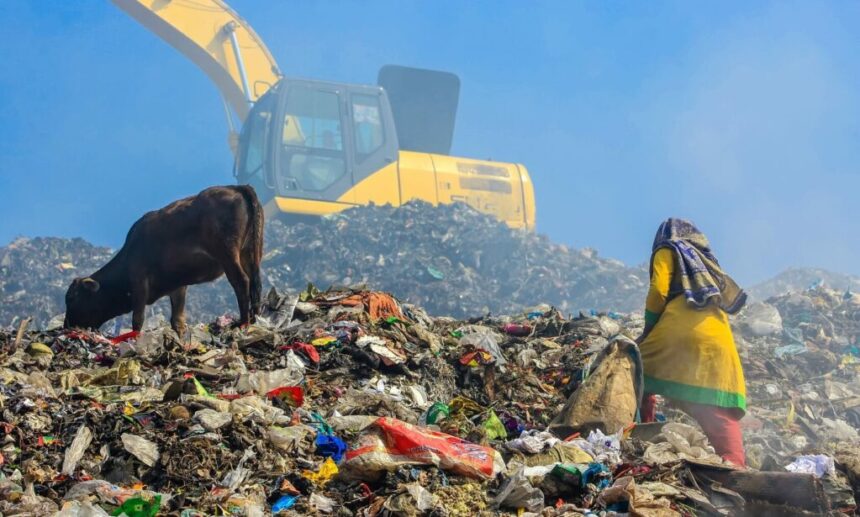Recently, many companies have realized the significance of sustainability and are striving towards achieving zero waste to lessen their footprint effectively. This shift not only has a positive impact on branding and cost reduction but also meets consumer expectations for ethical business practices. Companies are learning about the necessary steps involved in making this transition successful.
Grasping the Concept of Zero Waste
The concept of zero waste involves redesigning products and processes to reduce waste effectively by focusing on the principles of reducing consumption, reusing materials whenever possible, and emphasizing recycling to lessen the impact on landfills.
Examining the Current Methods for Disposing of Waste
Studying waste management methods is the first stage in the process of transition. A waste audit provides information on how waste is produced. Recognizing materials that are frequently disposed of can highlight where improvements are necessary. Through this assessment, businesses across domains can grasp the extent of their waste impact and devise specific plans to minimize waste.
Establishing Objectives
Setting measurable goals helps businesses move closer to achieving zero-waste practices. These goals provide guidance to teams, facilitate progress tracking, and motivate them toward common objectives, such as reducing landfill waste by a specific percentage or increasing the use of recycled materials while phasing out single-use plastics.
Involving Individuals and Interested Parties
Engaging all stakeholders significantly enhances zero-waste efforts. Team members, suppliers, and customers are crucial in this process. Teaching staff about eco-friendly methods fosters engagement and creativity. Partnering with suppliers for sustainable sourcing and packaging is essential. Customers who are involved value businesses that prioritize sustainability, boosting loyalty, and enhancing brand reputation.
Putting Waste Reduction Plans into Action
Successful waste reduction methods are crucial for achieving zero waste goals and transitioning sustainably. Discovering ways to reduce manufacturing waste, enhance productivity, and maximize resources is key. Companies can consider options such as redesigning products and incorporating eco-friendly practices using sustainable materials. Furthermore, promoting reuse and advocating for recycling helps create a mindset within the community.
Assessing Development
Tracking the progress of zero waste efforts is vital to gauge their impact and address any shortcomings effectively. Regularly reviewing performance metrics offers insights and feedback on progress. Factors like waste diversion rates and recycling percentages provide a glimpse into accomplishments and areas that require focus. Consistent evaluation ensures that objectives are aligned with expectations and allows for adjustments when needed.
Dealing with Difficulties
Moving towards a zero-waste approach comes with its set of challenges, such as resistance to change, financial limitations, and logistical obstacles. Businesses need to tackle these barriers through problem-solving and careful planning. Promoting a proactive mindset among the team, securing the necessary resources, and streamlining operations all play crucial roles in overcoming these challenges. The ability to adapt and bounce back ultimately leads to successful transitions.
Embracing Achievements
Recognizing and appreciating accomplishments helps strengthen dedication to achieving zero waste goals, both among individuals and within organizations. Sharing achievements with stakeholders boosts morale and motivation, fostering a sense of pride and drive for progress in sustainability efforts. This not only enhances brand reputation but also appeals to environmentally conscious consumers.
The Impact of Technological Advancements
The use of technology is essential in supporting initiatives towards achieving zero waste goals. Technology provides tools for monitoring waste levels and optimizing resources through data analysis solutions. Companies can leverage software programs to track their waste generation patterns, pinpoint areas of inefficiency, and implement improvements. Technology enables decision-making based on insights and simplifies operations for increased productivity.
Establishing a Culture of Sustainability
Creating an environment that prioritizes sustainability is essential for long-term success, benefiting both the organization and the planet. By promoting eco-friendly actions at all levels, from leadership to employees, a shared commitment to sustainability is fostered. Integrating sustainability into the company’s core values and daily operations ensures that minimizing waste and resource consumption becomes a consistent goal. This approach not only reduces environmental impact but also sparks innovation, encouraging employees to develop creative solutions that drive efficiency and progress. As sustainability becomes embedded in the company culture, it contributes to both profitability and positive societal impact.
Closing Thoughts
Moving towards a zero-waste model requires a strategy that demands commitment and creativity from all parties involved in the process. Understanding the principles of zero waste and evaluating existing methods before setting targets are crucial steps for companies aspiring to make substantial progress in this area. Incorporating technology and fostering a culture of sustainability within the organization ensures long-term viability and prosperity. As businesses wholeheartedly embrace the concept of zero waste practices, they contribute to a better tomorrow while enhancing their environmental footprint and brand reputation.






